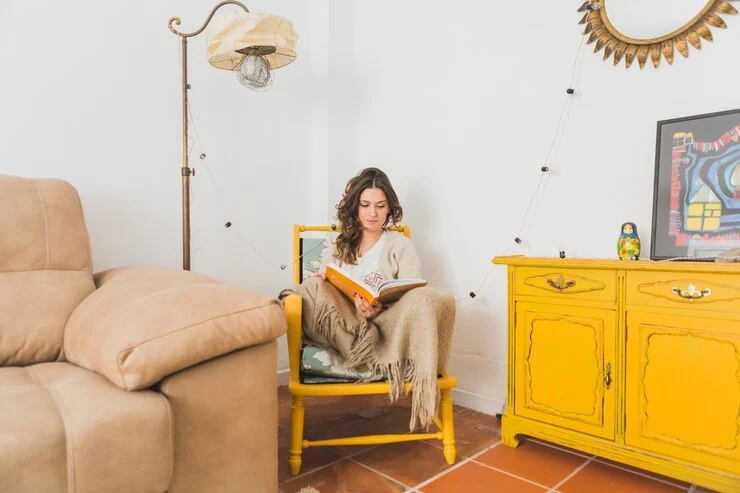The Timeless Appeal of Quality Craftsmanship
In the hustle and bustle of our daily lives, furniture often plays a silent yet significant role. From the sturdy dining table where family meals are shared to the cozy armchair that cradles us during quiet moments, furniture is more than just decor—it’s an integral part of our daily experience. But have you ever considered the secret life of furniture? The tales it could tell if only it could speak? Choosing pieces built to last unveils a rich narrative of sustainability, craftsmanship, and timeless design that not only enhances our living spaces but also contributes to a more sustainable future.
Craftsmanship: The Foundation of Endurance
Susan Miller, a voice from the Sustainable Furnishings Council, aptly points out, “Well-made furniture is an investment that can last for generations. By choosing quality over quantity, you’re not only reducing your environmental impact, but you’re also saving money in the long run.” It’s a perspective that echoes through the corridors of time, resonating with the wisdom of previous generations who understood the value of craftsmanship and durability.
The Art of Joinery: Creating Lasting Bonds
Craftsmanship is the cornerstone of furniture longevity, as Mina Huntsman, a seasoned furniture maker and restorer, emphasizes. “Look for furniture constructed with joinery techniques like dovetails and mortise and tenon. These methods create a strong and lasting bond that can withstand years of use.” It’s in the meticulous dovetail joints and precise mortise and tenon connections that the soul of enduring furniture resides—a testament to the skill and dedication of artisans who pour their hearts into each piece.
The Solidity of Wood: A Promise of Reliability
Michael Holmes, a trusted contractor and television personality, advocates for the enduring qualities of solid wood. “Don’t be afraid to invest in solid wood furniture. Solid wood is a naturally durable material that can be sanded, refinished, and repaired over time, unlike particleboard or MDF which tend to be unrepairable.” In a world where fast furniture dominates the market, the solidity of wood stands as a beacon of reliability, promising years of faithful service and the opportunity for renewal through restoration.
The Aesthetic Appeal of Timeless Design
Alexa Hampton, an esteemed interior designer, invites us to consider the craftsmanship of furniture. “Look for pieces with clean lines, smooth finishes, and well-proportioned details. These qualities are often indicative of good construction and attention to detail.” It’s in the graceful curves and flawless finishes that the true essence of craftsmanship reveals itself, captivating our senses and elevating the everyday into the extraordinary.
Furniture with a Story to Tell
But furniture is more than just a functional object—it’s a reflection of our lives, as Hirotaka Mitsuya, a Japanese woodworker, beautifully expresses. “Furniture should be built to not only serve a purpose but also to develop a patina and character over time. Choose pieces that age gracefully and tell the story of their use.” In the gentle wear and weathering of time, furniture gathers stories, each scratch and mark a testament to the moments shared and memories made.
The Enduring Legacy of Timeless Design
Eames Demetrios, the grandson of Charles and Ray Eames, emphasizes the timeless quality of good design. “The best pieces of furniture are timeless designs that are built to last. They should be well-proportioned, functional, and aesthetically pleasing, regardless of current trends.” It’s in the enduring allure of timeless design that furniture transcends mere functionality, becoming a symbol of enduring elegance and refined taste.
The Environmental and Social Implications of Furniture Choices
But the allure of built-to-last furniture extends beyond aesthetics—it carries profound environmental and social implications as well. Studies such as the “Lifecycle Assessment of Furniture: A Comparative Analysis” by Chalmers University of Technology shed light on the environmental impact of different materials and constructions. Solid wood furniture, with its longer lifespan, emerges as a sustainable choice with a lower overall environmental footprint compared to cheaper, less durable alternatives.
Similarly, the “Consumer Benefits of Owning Heirloom Quality Furniture” by Michigan State University highlights the emotional value of heirloom furniture. Consumers who own heirloom pieces report a greater sense of connection to their home and family history, underscoring the emotional resonance of furniture that stands the test of time.
Conversely, the “Hidden Costs of Fast Furniture” by Greenpeace International unveils the darker side of disposable furniture production. From deforestation to pollution and worker exploitation, the mass production of cheap, disposable furniture exacts a heavy toll on both the environment and human well-being.
In contrast, the “Business Case for Sustainable Furniture” by McKinsey & Company presents a compelling argument for sustainability in furniture production. Not only does it align with consumer demand for eco-friendly products, but it also offers cost savings through efficient production methods and the use of recycled materials.
Conclusion: Investing in a Sustainable Future
In conclusion, the secret life of furniture unveils a narrative rich in craftsmanship, sustainability, and enduring beauty. By choosing pieces built to last, we not only enrich our living spaces but also contribute to a more sustainable future for generations to come. As we embark on the journey of furnishing our homes, let us remember the timeless wisdom of investing in quality, craftsmanship, and enduring design—choices that resonate not only with our present needs but also with the echoes of the past and the aspirations of the future.
This article was crafted with insights from experts including Susan Miller from the Sustainable Furnishings Council, Mina Huntsman, a furniture maker and restorer, Michael Holmes, a contractor and television personality, Alexa Hampton, an interior designer, Hirotaka Mitsuya, a Japanese woodworker, and Eames Demetrios, the grandson of Charles and Ray Eames. Additionally, it incorporates findings from various studies including those conducted by Chalmers University of Technology, Michigan State University, Greenpeace International, and McKinsey & Company.










